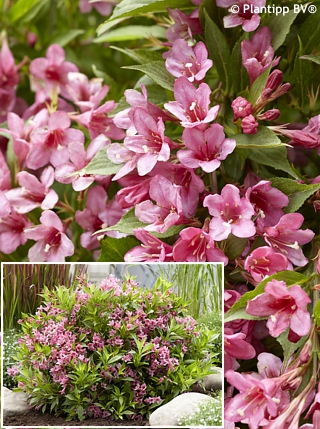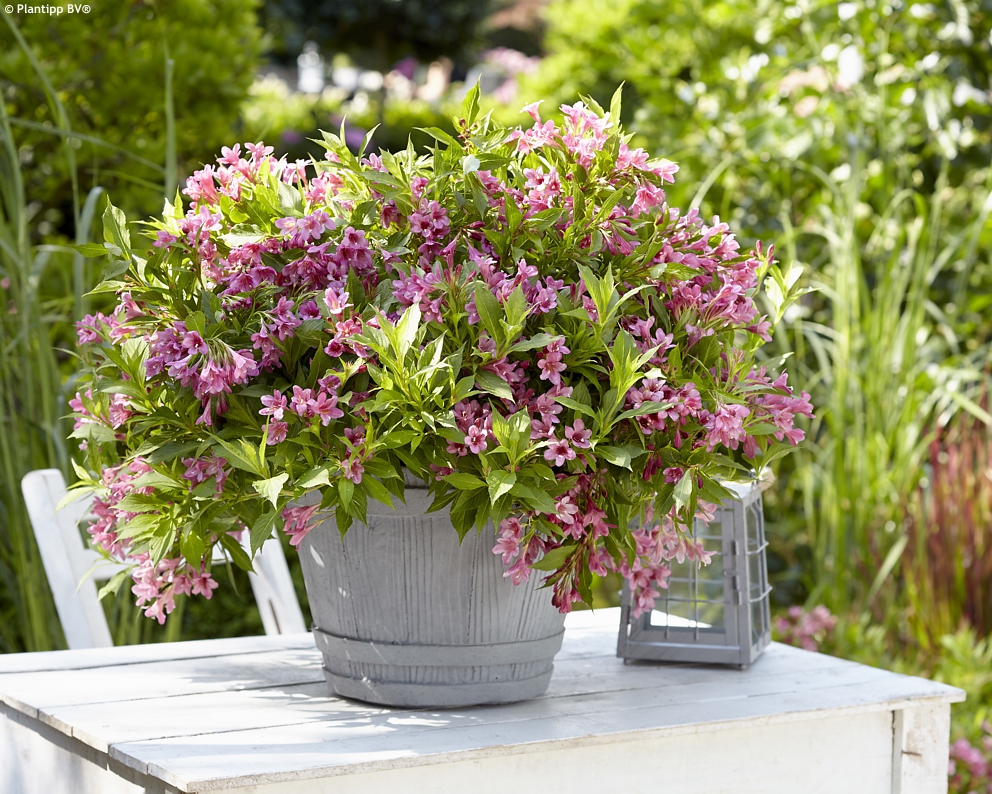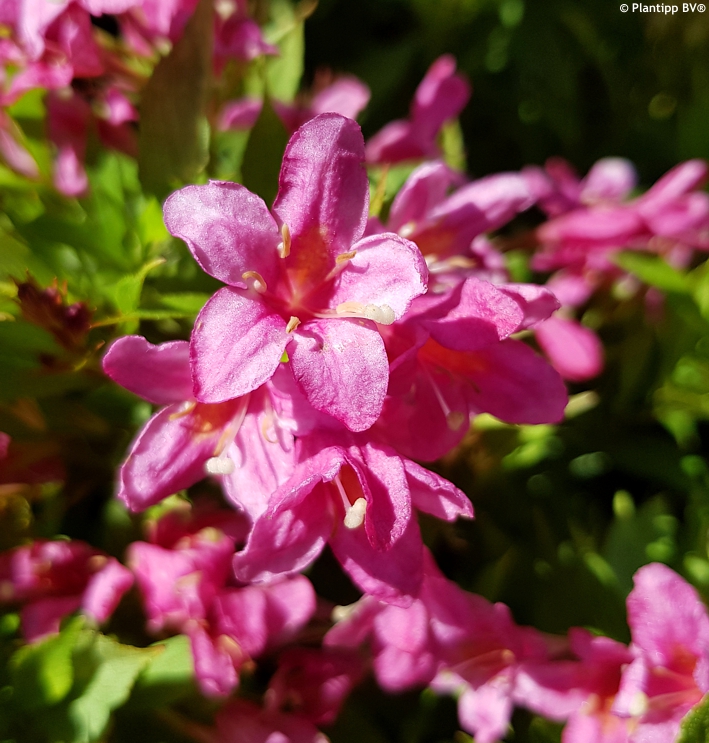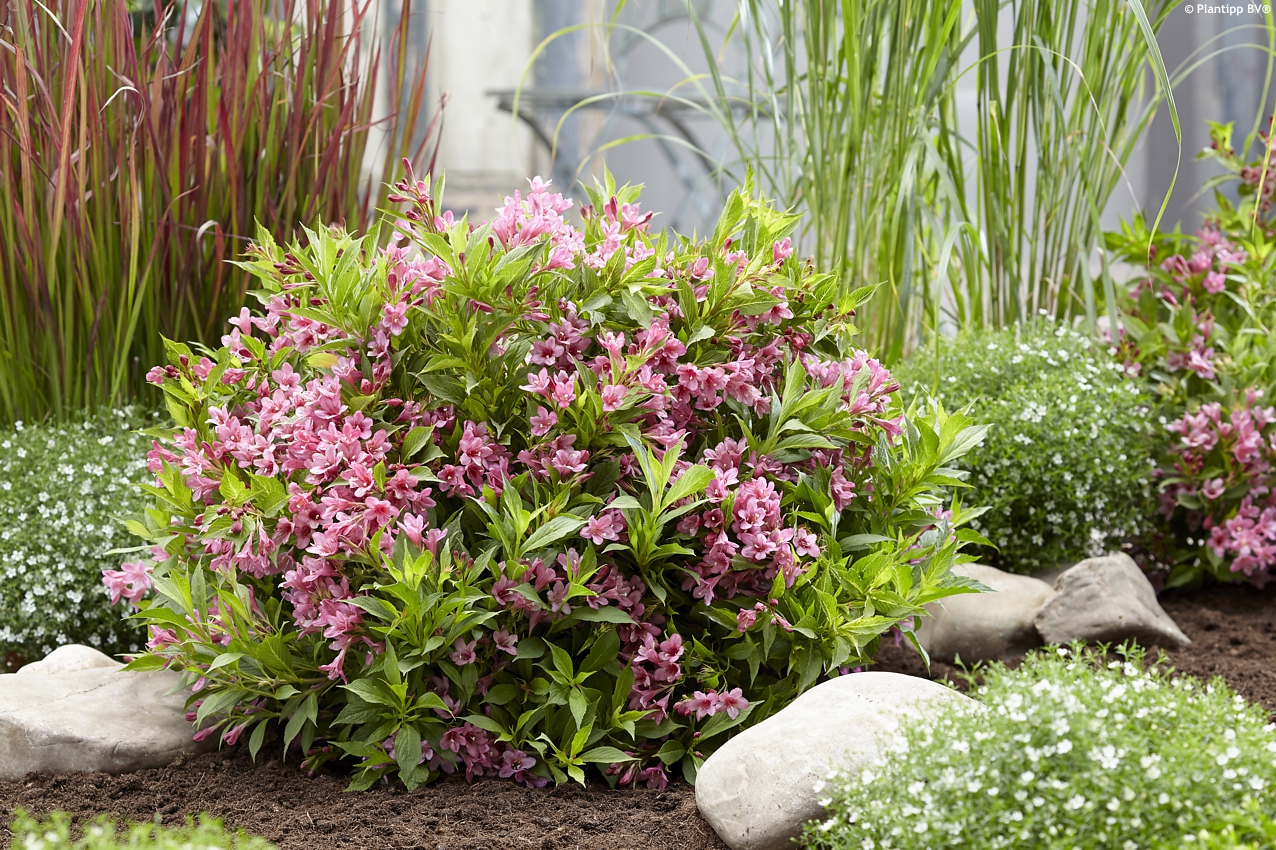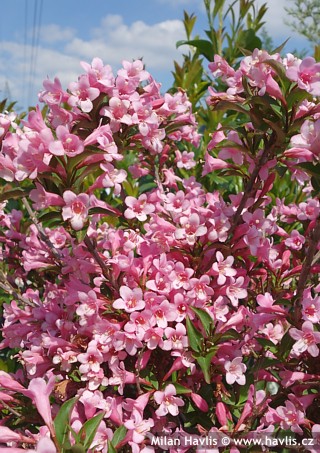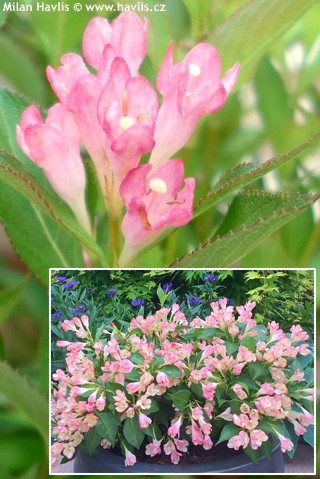Weigela 'Tvp2' PICOBELLA ROSA weigela
Weigela
Weigelas are highly praised and frequently used landscape plants because they are problem-free, profusely flowering shrubs which require little or no maintenance. They are deciduous and commonly grow 1.5-2.5m tall and wide, while new and modern varieties are bred for more compact growth and there are even dwarf cultivars available today. Weigelas come from East Asia (North China, Korea, Japan) and were named after German professor Christian Ehrenfried Weigel (1748-1831) from University of Geifswalg.
PICOBELLA ROSA is a dwarf, pink-flowered weigela of compact habit. It was bred by Gijsbertus Verhoef in Dutch nursery Bert Verhoef Boomkwekerij. It is suspiciously similar to the Czech variety PINK POPPET® from 1991 and it is possible that it has some of its genes because PINK POPPET® was so groundbreaking that since its introduction it has been used as a parent for further crossbreeding of low growing varieties.
PICOBELLA ROSA weigela bears clear pink, shortly funnel-shaped flowers in the main flowering season from mid May for 3-4 weeks and then continues to bloom sporadically by the end of the season. It grows slowly, predominantly upright, only the lateral twigs may be slightly prostrate, and naturally forms quite symmetrical, rounded to dome-shaped shrubs. The deciduous leaves are broadly lanceolate, slightly widened towards the tip, finely serrated at margins, medium green. The shrub is well branched, and dense. European Patent No. 55623 was granted in 2020.
Pruning is essential if you want a pretty plant which weigelas can easily be. Since they flower mostly on previous year's wood prune them by one third or even one half right after flowering in June so that they have enough of time to make plenty of new twigs that will mature quickly and bear plenty of flowers in the next season. Use them as screening plants in informal flowering hedges, in parks and public landscapes, or as specimens in small sized gardens.
Weigelas thrive in semi-fertile, slightly moist soil, preferably in full sun, however you can often see them growing in part shade or even complete shade and they still bloom. They can take heavy and compacted soil, too, but will need more time to become nice and bushy. Occasional flooding is not a problem, in fact, they prefer excess water rather than drought. Their hardiness varies with variety, but usually they withstand min. -29 °C (USDA zone 5). PICOBELLA ROSA is hardy to about -29 °C (USDA zone 5). Unlike most tall growing varieties, it is suitable for outdoor pots and planters with regular watering but good drainage.
Last update: 28-02-2022; 06-05-2023

































